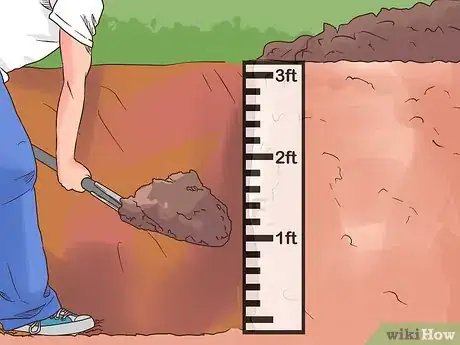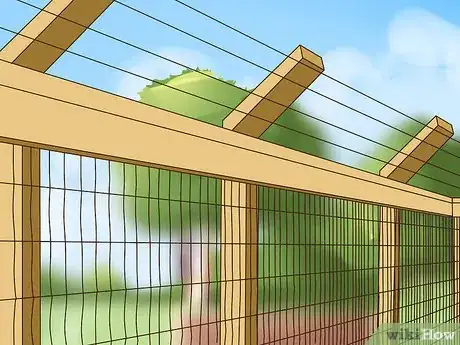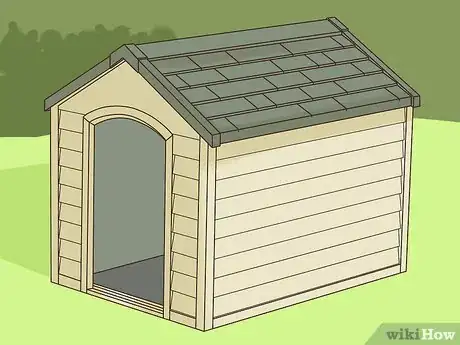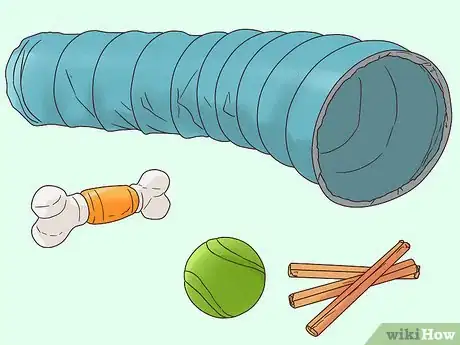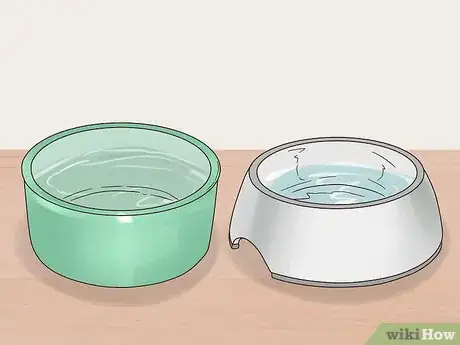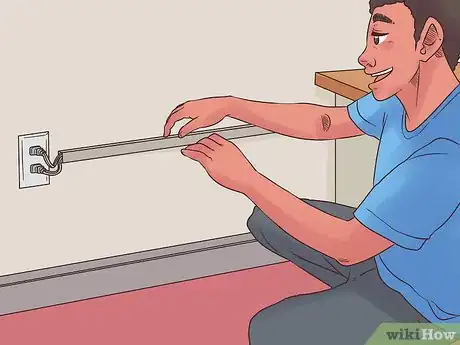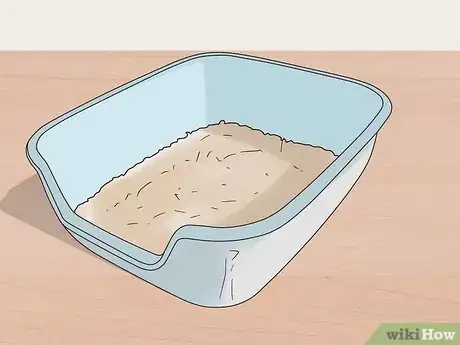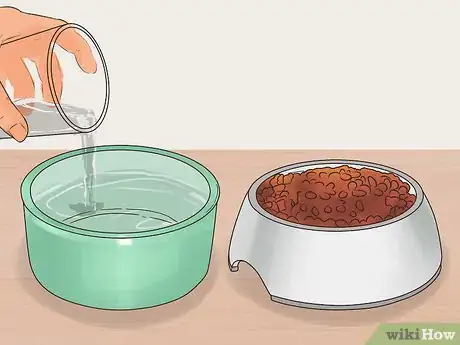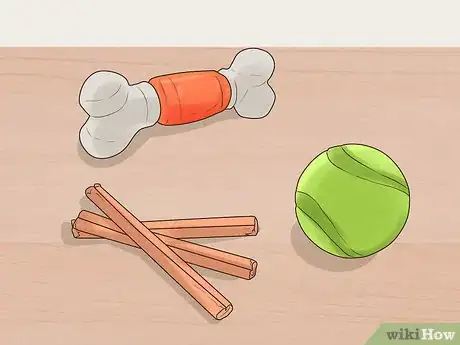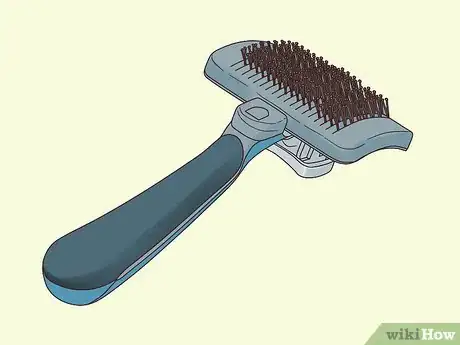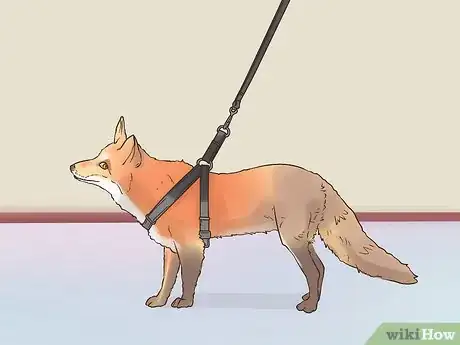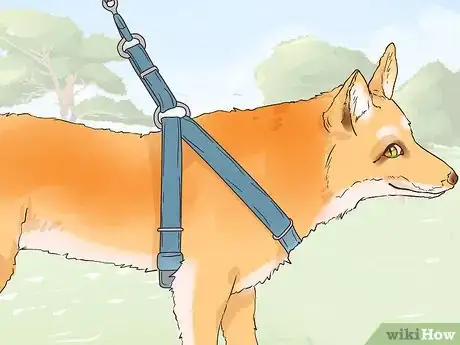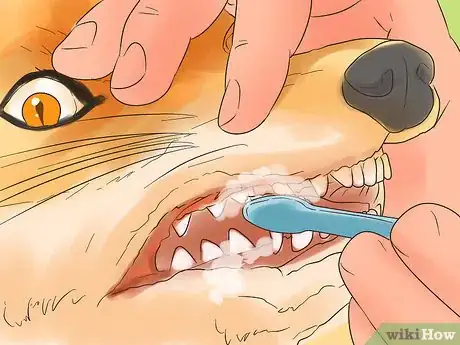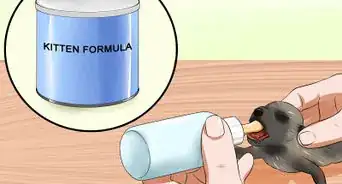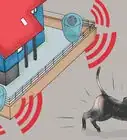This article was co-authored by Pippa Elliott, MRCVS. Dr. Elliott, BVMS, MRCVS is a veterinarian with over 30 years of experience in veterinary surgery and companion animal practice. She graduated from the University of Glasgow in 1987 with a degree in veterinary medicine and surgery. She has worked at the same animal clinic in her hometown for over 20 years.
wikiHow marks an article as reader-approved once it receives enough positive feedback. This article received 25 testimonials and 87% of readers who voted found it helpful, earning it our reader-approved status.
This article has been viewed 271,727 times.
Domesticated foxes can make great pets. Not to be confused with tame wild foxes, domesticated foxes are bred to be more friendly and docile than their wild counterparts.[1] They're often described as giant kittens! Because foxes are not normal pets, special care is needed to make sure foxes are legal pets in your area and to prepare your home for an exotic pet. Foxes are not adapted to home life like cats and dogs, so make sure to consider some important issues that may arise when trying to keep what is essentially a wild animal in your home.
Steps
Preparing an Outdoor Space for a Fox
-
1Build a fenced enclosure. Outdoor foxes must be fenced in, or else they will run off to hunt or explore. Choose an area at least 100 square feet.[2] Purchase a large wire fence to use as a fox enclosure.
- Try to choose a sheltered area protected from wind and direct sun.
- Choose a spot with sturdy ground rather than wet or marshy areas.
-
2Dig down about 3 feet (0.9 m) and place the fence into the ground. Foxes will dig down to try to get out of the fence so it must extend below the surface.
- A concrete floor will work even better to keep the fox from digging under the fence, but it can be tough on the fox's paws. Make sure to cover a concrete floor in dirt or mulch.[3]
- Another option is burying chain-link fencing under soil or mulch. This will keep the fox enclosed even if they dig down.
Advertisement -
3Build a top for the fence. The fenced enclosure needs to be covered to keep the fox from climbing out.
-
4Add a dog house. A larger dog house will work well as a place for your fox to sleep and hang out. Fill it with blankets, hay or straw, or something else warm for it to sleep on.
-
5Include toys. Foxes are very active and love to have toys to play with. Try out different toys and see which your fox likes best. Your fox might like:
- Tunnels made for dogs
- Balls
- Dog or cat chew toys
- Fabric toys
- Even sticks make great toys!
-
6Add bowls for water and food. Make sure to use very heavy bowls. Because just like dogs, a fox can flip light bowls over for fun.
-
7Add some shade. Find a way to give your fox some shade. Secure a tarp over the top of the cage or include a sizeable covered area.
Preparing to Have a Fox Indoors
-
1Pet proof your house. Foxes can make a mess of your house so make sure to prepare as you would for a new puppy/dog or kitten/cat. You may wish to cover electrical cords, clean up the area, and try to minimize the number of places your fox could hide, such as behind sofas.
- Some foxes can learn to live inside but a fox is still a wild animal so expect that it will be difficult to have a fox indoors.
- Even foxes that live indoors most of the time will need an outdoor enclosure. Foxes love to run and play so they need outdoor space. It is generally not recommended to leave your fox at home unsupervised so you'll need an outdoor enclosure for when you go out.
-
2Get a litter box. Foxes can sometimes be trained to use a litter box just like cats.
- A covered litter box may work best, foxes love to dig.
- Any size litter box intended for cats can work.
- Sometimes foxes cannot be trained to use a litter box because they are wild animals. Consider this before choosing a fox for a pet.
-
3Prepare food and water bowls. Use heavy bowls for food and water so that the fox does not flip them over.
-
4Get some toys. Acquire some toys for your fox to play with inside.
- Even if your fox has outdoor toys you may want additional toys for inside so that dirty toys are not brought inside your home.
-
5Find a pet bed. Get a nice pet bed for your fox. Some foxes like to sleep in your bed with you, but others prefer their own bed. Foxes can behave a lot like cats in this area.
-
6Purchase a brush. Foxes shed in heavily summer months, so they need to be brushed regularly.
Caring for Pet Foxes
-
1Check local laws. Pet foxes are illegal in many places. Where they are allowed, foxes are considered exotic pets and may require a license. Make sure to obtain one before you purchase or adopt a fox.[4]
- Check for state laws and local laws. Even if your state allows pet foxes your city may not.
- Get information about state rules on this website.
-
2Find a vet. Locate a veterinarian in your area that is willing to treat a fox. Having a vet for your fox is a must. The fox will need vaccines, fixing, regular check-ups and period medical treatments just like your other pets.
- Not all vets are willing to care for exotic animals. Make sure to find one who is.
- Find a veterinarian before you obtain the fox. It can be very difficult to find a vet who is able and willing to work with animals that are not normally used for pets.
- Annual appoints are best to keep track of health.
- Keep track of all your fox's medical records, in case a problem occurs.
-
3Consider other pets. Do not get a fox if you have other pets that are smaller than a fox. Foxes eat small animals in the wild so do not keep a fox around smaller animals especially birds or rodents.[5]
- Never leave a fox alone with other animals.
-
4Get fox food. Foxes are omnivores, so they can eat a large variety of foods. Give them a high quality medium sized dog food and consult a vet about other food options.[6]
- Fox diets can include meats and vegetables to supplement basic dog food. Check with your vet.
- Leave out some dry dog food for the fox during the day. Try adding a can of wet cat food mixed with vegetables to the fox's diet once a day.[7]
-
5Choose foods carefully. Work with your vet to create a list of foods that you should not feed your fox. Never give foxes anything that can hurt a cat or dog. Some common foods that will harm a fox include:
- Avocados
- Caffeine
- Chocolate
- Grapes and raisins
- Green eggplants
- Peppers
- Tomatoes
- Green potatoes
- Macadamia and Walnuts
- Pits and seeds from apples, cherries, and peaches
- Xylitol
-
6Keep the fox leashed, tagged, and collared. Always keep your fox on a leash or fenced in when outdoors. They will kill other animals even if they aren't hungry, including neighborhood pets. Give your fox a collar and tags so if it does get away it will not be mistaken for a wild fox.
-
7Get exercise. Foxes are very high energy animals, so they need a lot of exercise. About an hour or two a day will wear your pet down.
-
8Use a pet harness. Always use a harness for walks. The collar is for identification, but a leash should be attached to a harness because attaching it to a collar can choke the fox.
-
9Take care of the fox's teeth. Foxes, like dogs and cats, can have tooth decay, so brushing is a must. Every week or three days should be good, depending on your fox's diet.
Warnings
- Owning a fox illegally can lead to fines or arrest, and in certain cases, may cost the fox's life.⧼thumbs_response⧽
- Be sure to keep all USDA and vaccination paperwork in a safe place.⧼thumbs_response⧽
References
- ↑ https://www.thesprucepets.com/domesticated-pet-foxes-1238643
- ↑ http://www.thepetfox.net/2011/09/pet-fox-enclosures-choosing-location.html
- ↑ http://www.thepetfox.net/2011/10/pet-fox-enclosures-flooring.html
- ↑ http://www.bornfreeusa.org/b4a2_exotic_animals.php
- ↑ http://sybilsden.com/caresheet/fennec.htm
- ↑ http://www.thepetfox.net/2010/08/fox-food-recipe-maintenance-diet.html
- ↑ http://sybilsden.com/caresheet/fennec.htm

